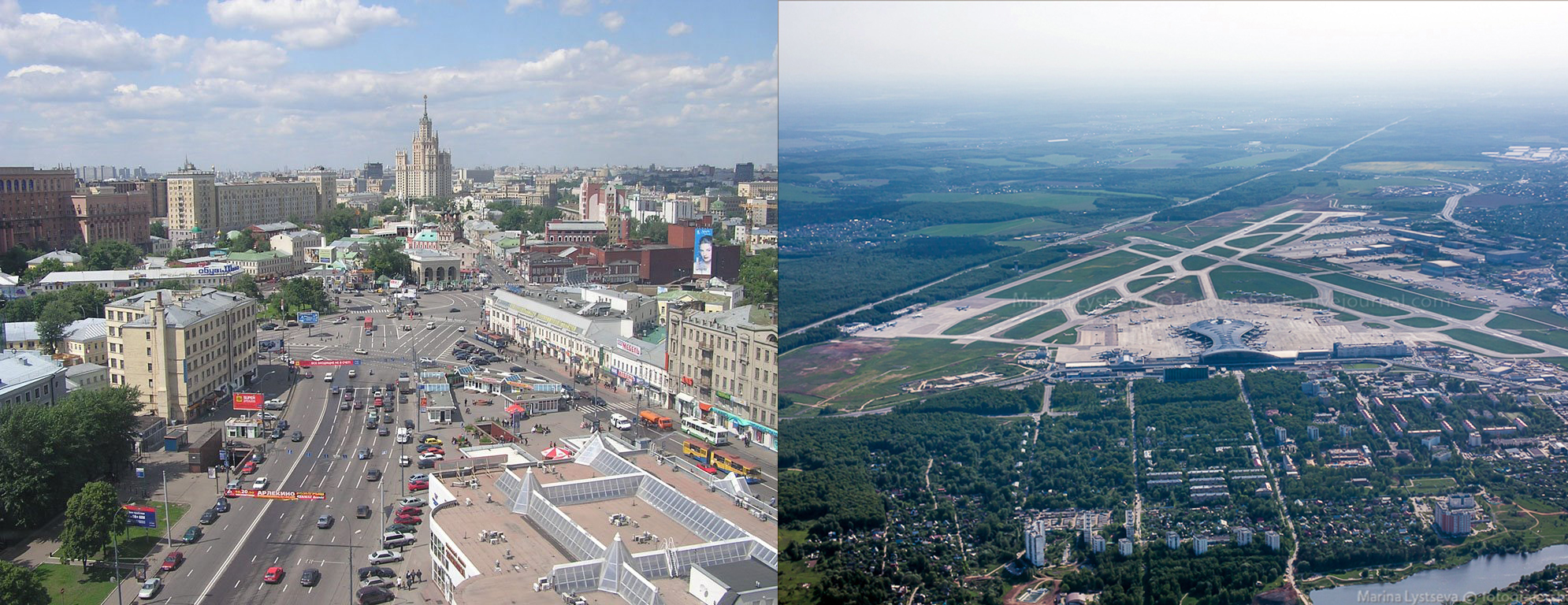
Uploaded on 2017-02-13 by Marina
1. Check the temperature differences in US cities. The research has shown that a significant difference between temperature in the cities and nearby areas could be observed around the USA. Single-day temperature differences reached up to 27°F with cities hotter than surrounding rural areas. This data also correlated with bad air quality. 2. Which are the main UHI effects that you can identify in your area? I wasn't able to find any researches on UHI effect in Moscow. However, I tried to take a look at the difference in temperature at the present time. I've chosen two meteorological stations: one located on Marksistskaya street in centre of Moscow, other near Vnukovo airport outside the Moscow borders. Although the second area couldn't be regarded as strictly rural, for it is partly covered with industrial hubs and multistorey building blocks, not to mention an airport itself, most adjacent territories are covered with forests, fields and individual housing. At 10 p.m on February 12th, 2017 the temperature on the station located in the city centre was -5,3°C, while in Vnukovo -8°C. The same difference was present on several other stations observed. So although it's winter, the difference between temperatures was roughly 2,5°C, which equals 4,5°F. One of the major reasons for UHI effect in the city is absorption of heat by buildings and asphalt. Other contributors - waste heat from cars, air conditioning and industry. The city centre also lacks greenery which influences its cooling abilities and removal of carbon dioxide - that not being of concern during winter time though. First image represents Taganskaya ploshad` in the centre of Moscow. Second image depicts district of Vnukovo airport near Moscow. Images were taken from open sources. http://sourceschm.appspot.com/taganskaya-ploshad-shema-dvizheniya.html http://panavia.ru/airports/russia/moscow/vnukovo/ 3. Which are the measures you would propose? To reduce UHI effect in the city I would propose renovation of open public spaces using materials with higher albedo, creation of more green spaces to increase evapotranspiration capabilities. Another important measure is popularization of public transport instead of private cars and prioritization of green means of transportation: electric cars, bicycles. Last but not least is the reduction of polluting emissions from industries located in the city. 4. Is UHI effect concerning policy making in your area? The UHI effect problem is only starting to get researched and has not yet gained much publicity. Main direction of policy transformation in present-day Moscow, which could contribute to decrease in UHI effect, concerns transportation. Paid parking has been introduced in the city centre, public transportation has been optimized, city as a whole became a little more comfortable for pedestrians and cyclists. Ecological and climatic issues, however, haven’t been the major cause of concern.